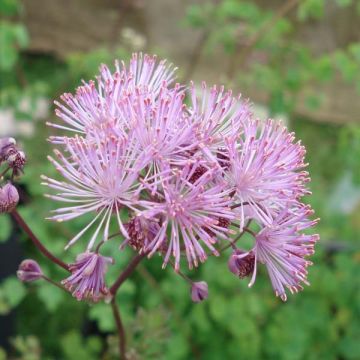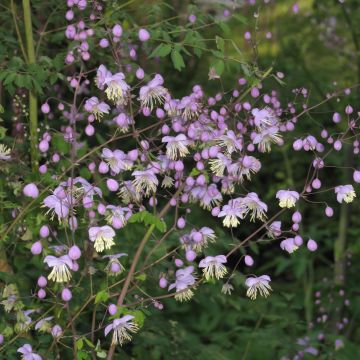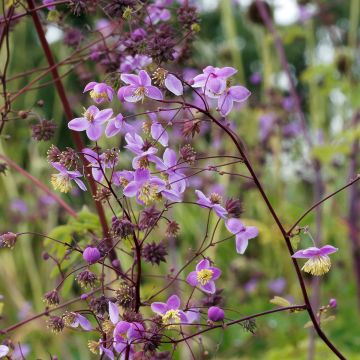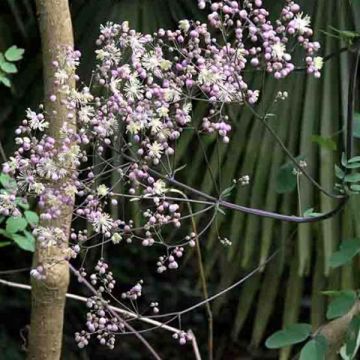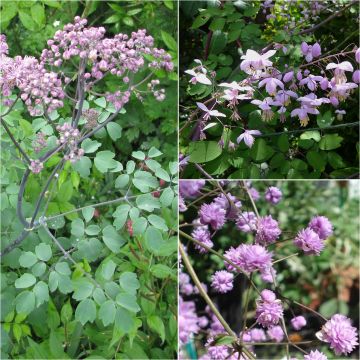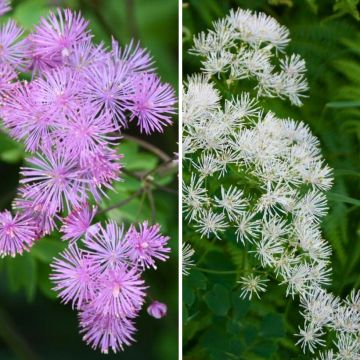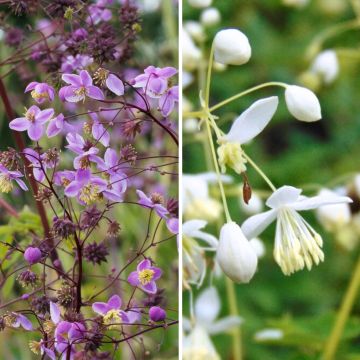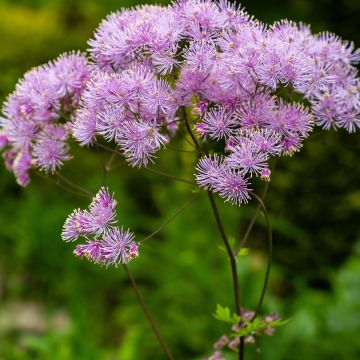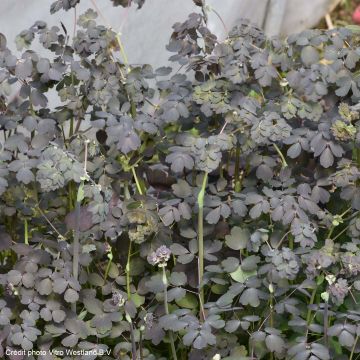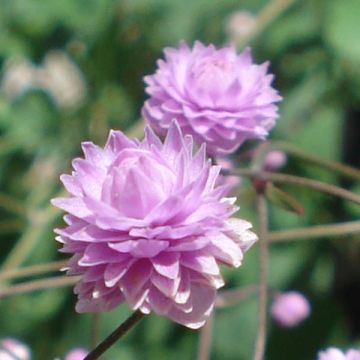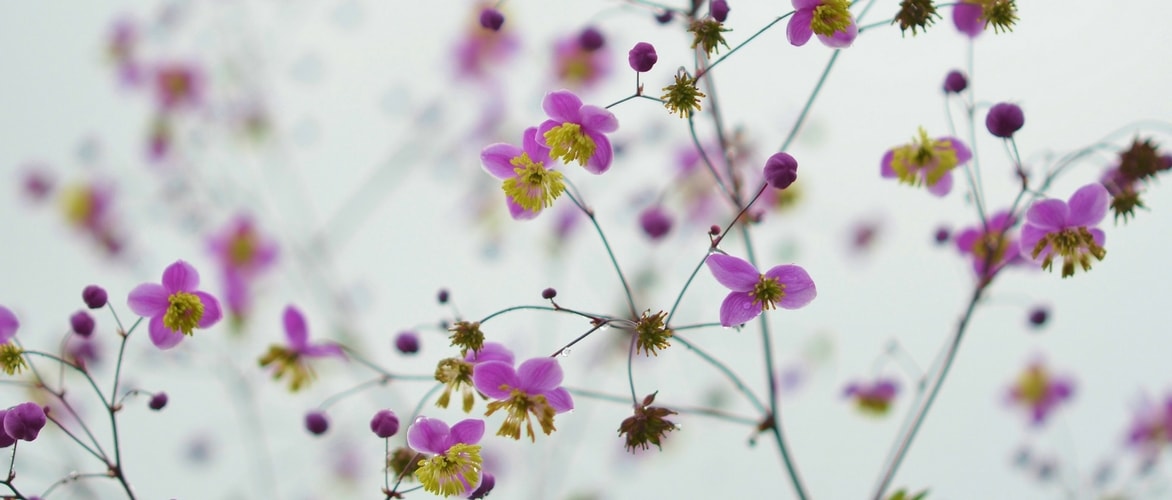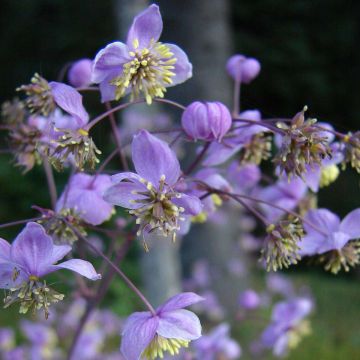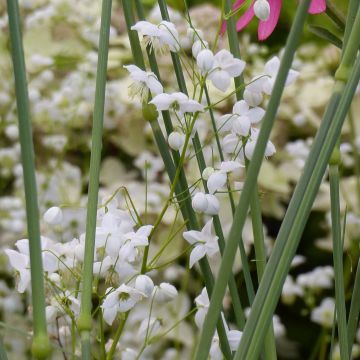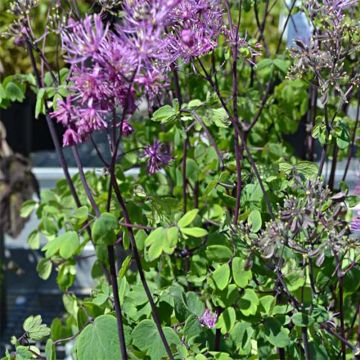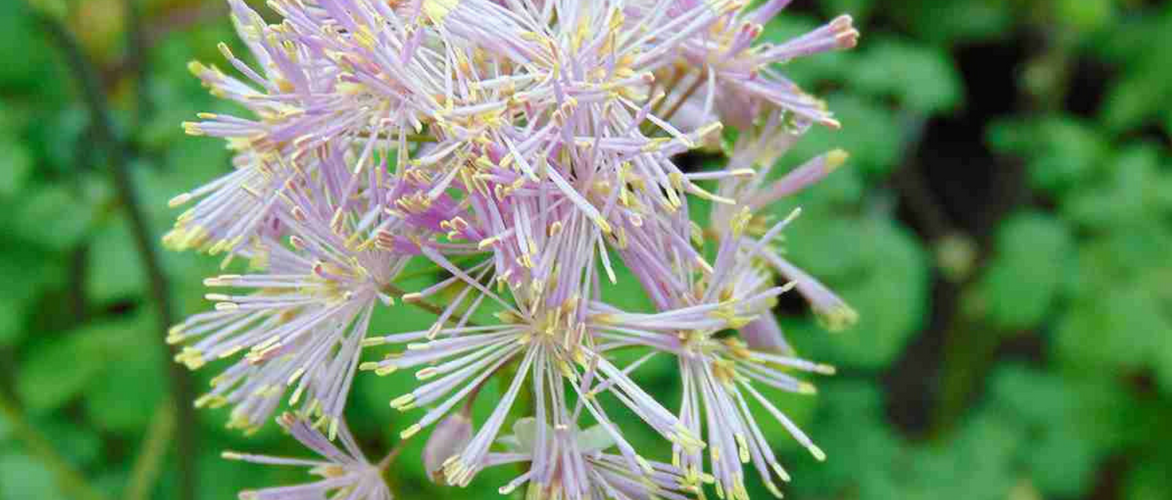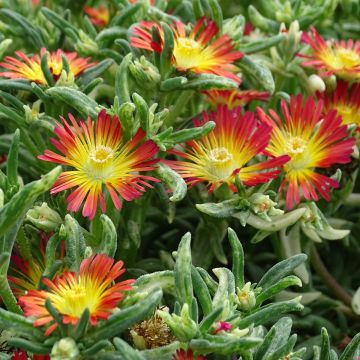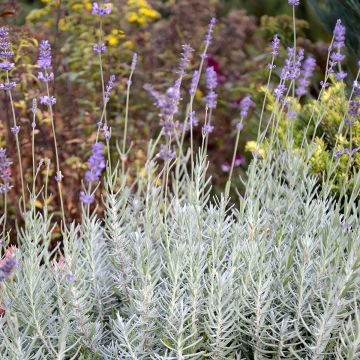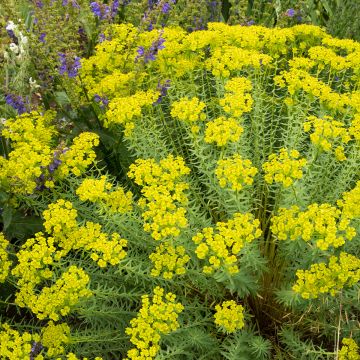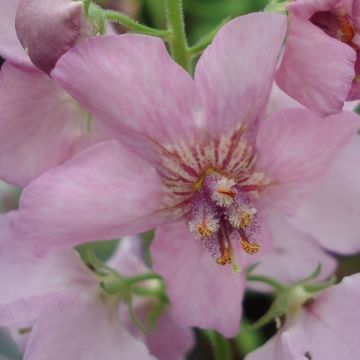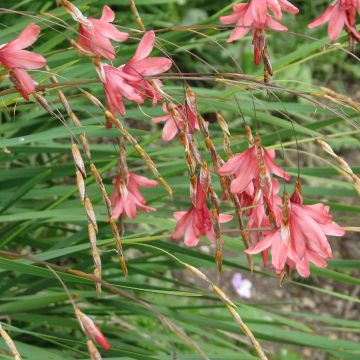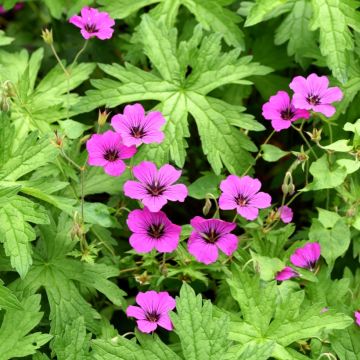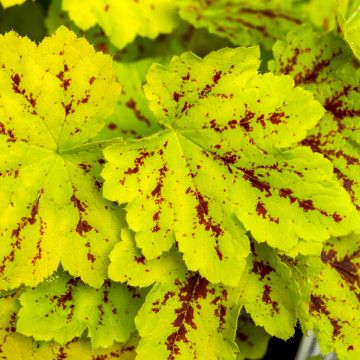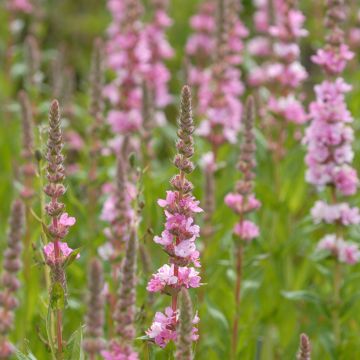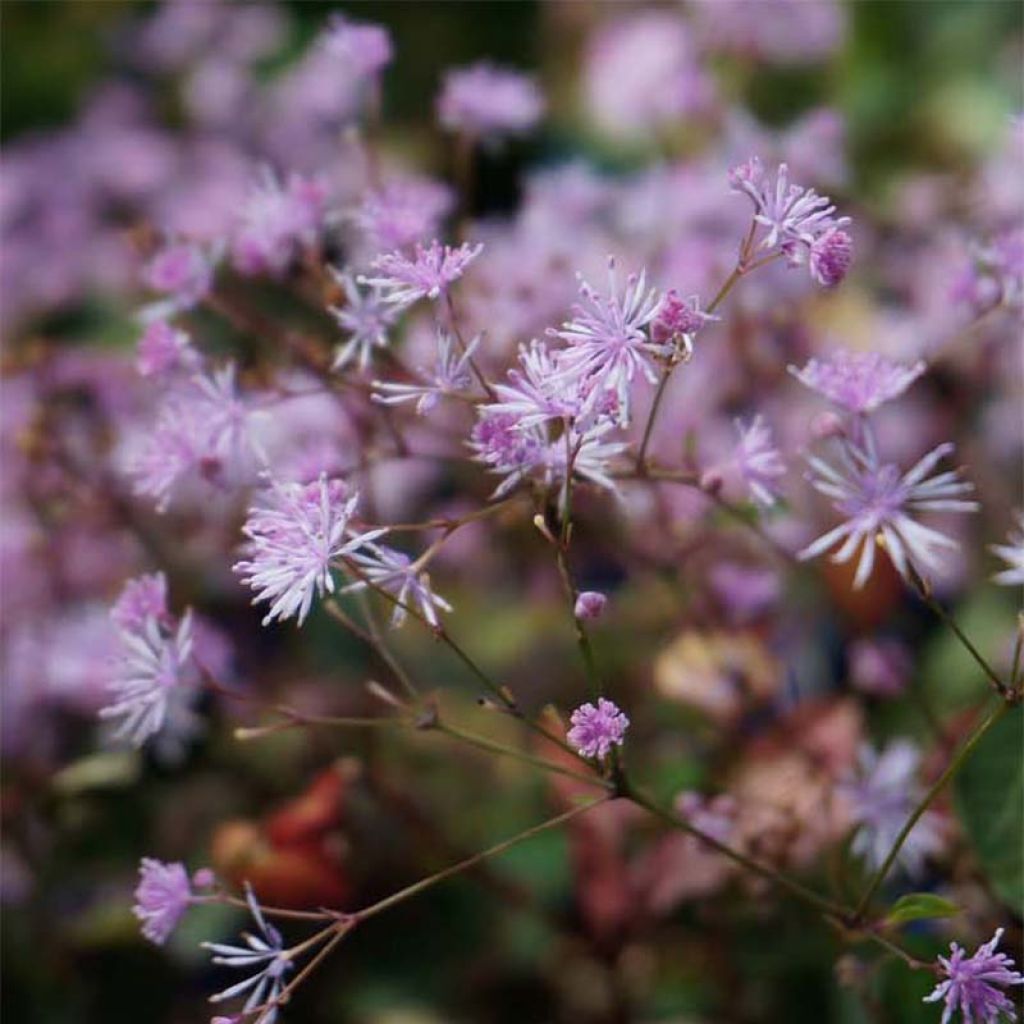

Thalictrum ichangense Evening Star - Meadow-rue
Thalictrum ichangense Evening Star - Meadow-rue
Thalictrum ichangense Evening Star
Chinese Meadow Rue
Special offer!
Receive a €20 voucher for any order over €90 (excluding delivery costs, credit notes, and plastic-free options)!
1- Add your favorite plants to your cart.
2- Once you have reached €90, confirm your order (you can even choose the delivery date!).
3- As soon as your order is shipped, you will receive an email containing your voucher code, valid for 3 months (90 days).
Your voucher is unique and can only be used once, for any order with a minimum value of €20, excluding delivery costs.
Can be combined with other current offers, non-divisible and non-refundable.
Why not try an alternative variety in stock?
View all →This plant carries a 12 months recovery warranty
More information
We guarantee the quality of our plants for a full growing cycle, and will replace at our expense any plant that fails to recover under normal climatic and planting conditions.
Would this plant suit my garden?
Set up your Plantfit profile →
Description
Thalictrum 'Evening Star' is a new variety of meadow rue derived from a small Chinese species. It stands out for its remarkably coloured foliage, which serves as a backdrop for a very long lavender flowering, in infinitely light and frothy panicles. Apart from its spring to summer flowering, 'Evening Star' exhibits foliage like marbled epimedium in shades of olive green, Havana, silver, and copper. In the garden, this Thalictrum is a plant of precious and poetic appearance, deserving a prominent place in a semi-shaded bed, in damp, non-calcareous soil.
Thalictrum ichangense, from the Ranunculaceae family, is native to the moist forests of northern and eastern China. The cultivar 'Evening Star', from which it originates, was recently selected in the United States. It is a small herbaceous perennial with tubers that forms a small bushy clump from spring onwards. At maturity, this meadow rue will measure approximately 30 cm (12in) in height by 25 cm (10in) in width. Its foliage consists of leaves divided into small, generally triangular leaflets with serrated edges, more coppery when young, turning light brown and then olive green. Each leaf displays an irregular silver zone along the main veins. From this clump of leaves, flexible stems, coppery-purple in colour, emerge from May to September-October, surpassing the foliage. They bear loose panicle inflorescences, adorned with very thin petals in mauve-pink, giving them a fluffy and velvety appearance. The meadow rues, which establish themselves rather slowly, become more beautiful over time. They are quite hardy but do not appreciate competition from nearby roots. Their above-ground growth disappears in winter.
Remarkably coloured, delicately flowered in a lavender mist, this meadow rue undoubtedly brings a touch of poetry to the shaded areas of the garden or even to a pot on the patio. It will find its place in the garden of a collector or with a natural style, between shade and sun. It will have a beautiful effect in contrast with less delicate perennials such as hostas, as well as on the edge of shrub beds, with bluebells, woodland geraniums (Geranium phaeum), small ferns, Siberian bugloss, or dead nettles, for example. It can also be planted near hydrangeas, fuchsias, astilbes, heucheras, foxgloves, and many others. Just make sure not to associate it with overly exuberant plants that could suffocate it.
Thalictrum ichangense Evening Star - Meadow-rue in pictures
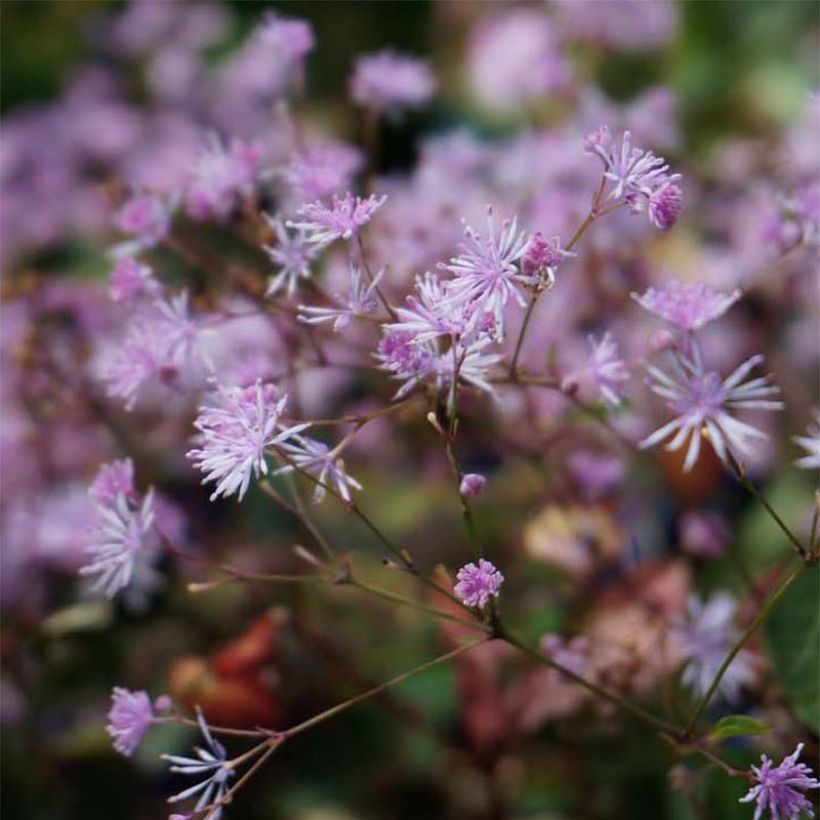

Flowering
Foliage
Plant habit
Botanical data
Thalictrum
ichangense
Evening Star
Ranunculaceae
Chinese Meadow Rue
Cultivar or hybrid
Other Thalictrum - Meadow Rue
View all →Planting and care
Thalictrum 'Evening Star' is a very hardy and low-maintenance perennial. It simply needs to be planted in partial shade or even full shade, in a moist to wet soil, rich in organic matter and well-drained, without limestone, neutral to slightly acidic. It is possible to establish it in the sun, provided that the soil remains moist and that there is ambient humidity around the plant. Planting can be done in spring or autumn. Planting at the base of a north or east-facing wall would be ideal. Do not hesitate to amend the soil with compost every year, in order to improve drainage in winter and facilitate root development. Also, do not forget to water regularly during dry and hot periods. Regularly remove faded flowers to prolong flowering. Losing its leaves in autumn and completely disappearing in winter, it will only reappear in spring quite late. Therefore, it is advisable not to cut the plant down in autumn, so as not to forget its location the following spring.
Being a slow-growing plant, it will delight the gardener over the years! Dividing the stumps can be done in March-April, by cutting the clump into several pieces with a spade, but the divisions take a long time to establish. Very resistant to diseases, it can, however, be susceptible to powdery mildew in case of drought, and to slugs at the start of vegetation.
Planting period
Intended location
Care
Planting & care advice
This item has not been reviewed yet - be the first to leave a review about it.
Similar products
Haven't found what you were looking for?
Hardiness is the lowest winter temperature a plant can endure without suffering serious damage or even dying. However, hardiness is affected by location (a sheltered area, such as a patio), protection (winter cover) and soil type (hardiness is improved by well-drained soil).

Photo Sharing Terms & Conditions
In order to encourage gardeners to interact and share their experiences, Promesse de fleurs offers various media enabling content to be uploaded onto its Site - in particular via the ‘Photo sharing’ module.
The User agrees to refrain from:
- Posting any content that is illegal, prejudicial, insulting, racist, inciteful to hatred, revisionist, contrary to public decency, that infringes on privacy or on the privacy rights of third parties, in particular the publicity rights of persons and goods, intellectual property rights, or the right to privacy.
- Submitting content on behalf of a third party;
- Impersonate the identity of a third party and/or publish any personal information about a third party;
In general, the User undertakes to refrain from any unethical behaviour.
All Content (in particular text, comments, files, images, photos, videos, creative works, etc.), which may be subject to property or intellectual property rights, image or other private rights, shall remain the property of the User, subject to the limited rights granted by the terms of the licence granted by Promesse de fleurs as stated below. Users are at liberty to publish or not to publish such Content on the Site, notably via the ‘Photo Sharing’ facility, and accept that this Content shall be made public and freely accessible, notably on the Internet.
Users further acknowledge, undertake to have ,and guarantee that they hold all necessary rights and permissions to publish such material on the Site, in particular with regard to the legislation in force pertaining to any privacy, property, intellectual property, image, or contractual rights, or rights of any other nature. By publishing such Content on the Site, Users acknowledge accepting full liability as publishers of the Content within the meaning of the law, and grant Promesse de fleurs, free of charge, an inclusive, worldwide licence for the said Content for the entire duration of its publication, including all reproduction, representation, up/downloading, displaying, performing, transmission, and storage rights.
Users also grant permission for their name to be linked to the Content and accept that this link may not always be made available.
By engaging in posting material, Users consent to their Content becoming automatically accessible on the Internet, in particular on other sites and/or blogs and/or web pages of the Promesse de fleurs site, including in particular social pages and the Promesse de fleurs catalogue.
Users may secure the removal of entrusted content free of charge by issuing a simple request via our contact form.
The flowering period indicated on our website applies to countries and regions located in USDA zone 8 (France, the United Kingdom, Ireland, the Netherlands, etc.)
It will vary according to where you live:
- In zones 9 to 10 (Italy, Spain, Greece, etc.), flowering will occur about 2 to 4 weeks earlier.
- In zones 6 to 7 (Germany, Poland, Slovenia, and lower mountainous regions), flowering will be delayed by 2 to 3 weeks.
- In zone 5 (Central Europe, Scandinavia), blooming will be delayed by 3 to 5 weeks.
In temperate climates, pruning of spring-flowering shrubs (forsythia, spireas, etc.) should be done just after flowering.
Pruning of summer-flowering shrubs (Indian Lilac, Perovskia, etc.) can be done in winter or spring.
In cold regions as well as with frost-sensitive plants, avoid pruning too early when severe frosts may still occur.
The planting period indicated on our website applies to countries and regions located in USDA zone 8 (France, United Kingdom, Ireland, Netherlands).
It will vary according to where you live:
- In Mediterranean zones (Marseille, Madrid, Milan, etc.), autumn and winter are the best planting periods.
- In continental zones (Strasbourg, Munich, Vienna, etc.), delay planting by 2 to 3 weeks in spring and bring it forward by 2 to 4 weeks in autumn.
- In mountainous regions (the Alps, Pyrenees, Carpathians, etc.), it is best to plant in late spring (May-June) or late summer (August-September).
The harvesting period indicated on our website applies to countries and regions in USDA zone 8 (France, England, Ireland, the Netherlands).
In colder areas (Scandinavia, Poland, Austria...) fruit and vegetable harvests are likely to be delayed by 3-4 weeks.
In warmer areas (Italy, Spain, Greece, etc.), harvesting will probably take place earlier, depending on weather conditions.
The sowing periods indicated on our website apply to countries and regions within USDA Zone 8 (France, UK, Ireland, Netherlands).
In colder areas (Scandinavia, Poland, Austria...), delay any outdoor sowing by 3-4 weeks, or sow under glass.
In warmer climes (Italy, Spain, Greece, etc.), bring outdoor sowing forward by a few weeks.






























